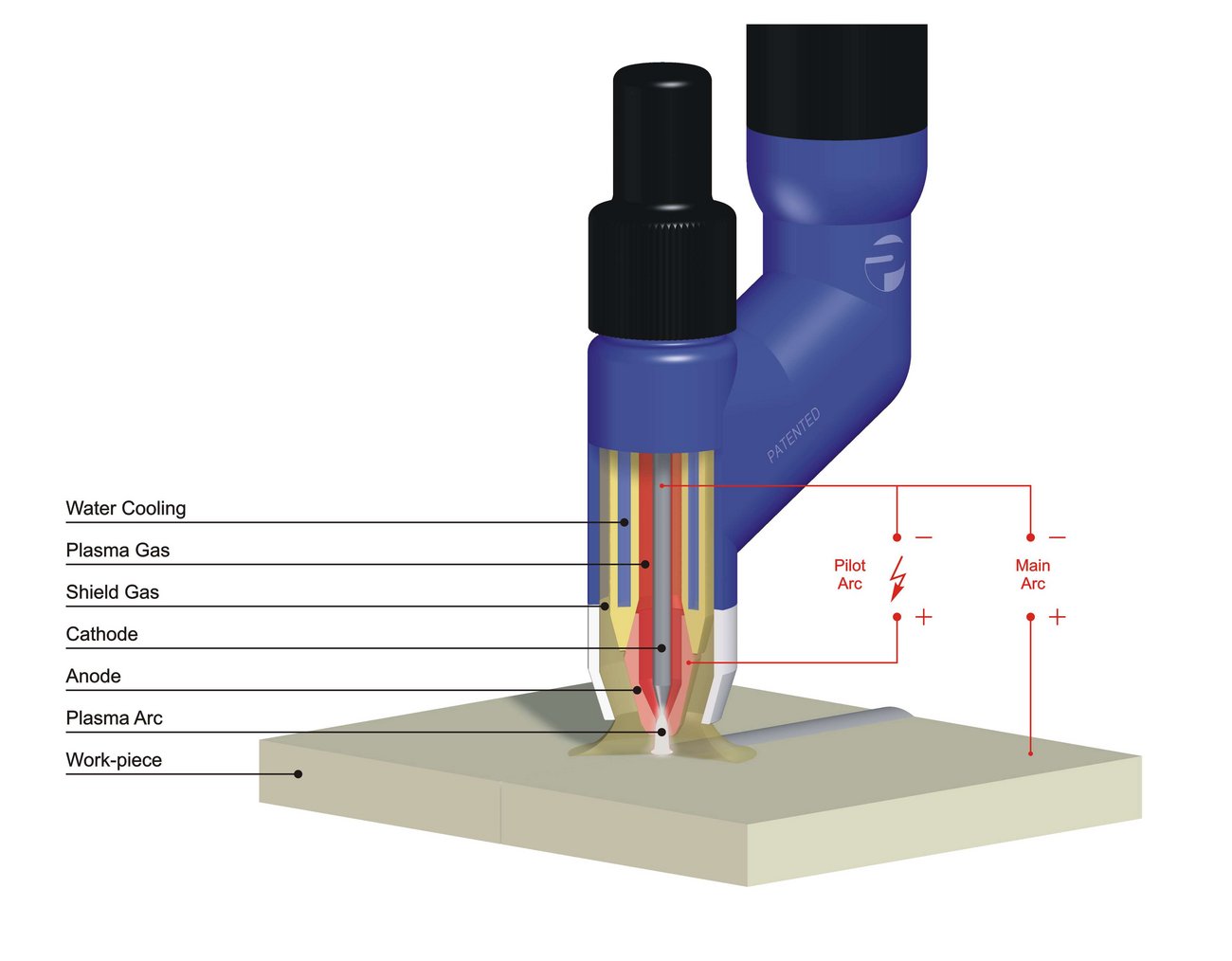Plasma
... a powerful and flexible tool for many industrial applications
Plasma - The 4th state of matter
If energy is continuously added to a piece of matter, its temperature rises and it usually changes from a liquid to a gaseous state. If the energy supply is continued, the kinetic energy of the elementary constituents increases with the temperature to a point where the collision of the gas molecules and the atoms breaks up the atomic shell of electrons. Negatively charged electrons and positively charged ions are formed.
This mixture of neutral, positively and negatively charged particles is known as plasma, which is electrically conductive due to its high temperature.
Plasma, also known as the 4th state of matter, exhibit unusual new properties due to the superposition of many different atomic physical effects. Plasmas can be easily influenced by external electric and magnetic fields, making them extremely controllable. Because of their high energy content, they enable processes that cannot take place in other states of matter. These properties make plasma a particularly powerful and extremely flexible tool for many industrial applications.
Principle of plasma welding technology
In a plasma torch, a direct voltage (DC) is first applied between the negative electrode and the nozzle, which is also applied between the electrode and the electrically conductive workpiece. By generating high-voltage pulses in parallel with the DC voltage between the electrode and the nozzle, a low-energy plasma jet, known as an pilot/auxiliary arc, is created inside the plasma torch. The plasma gas is dissociated (molecules are broken down into atoms) and ionised (electrons leave the electron shell) and emerges from the nozzle as a bright cone of light, making the space between the electrode and the workpiece electrically conductive.
Advantages
- Safe arc ignition
- High arc column stability
- Small seam width
- Low distortion
- Narrow arc column, largely independent of the distance between torch and workpiece
- Very good weld repeatability in automated operation
- Precisely adjustable weld depth
- Improved weldability of work pieces with offset edges
Applications
- Metal bellows production
- Corrugated pipe manufacturing
- Pipeline Construction
- Saw Blade Production/Repair
- Screen Production
- Thermocouple production
- Dental Technology
- Electrical industry
- Aerospace industry
- Instrumentation and valves
- Engine and turbine construction
- Reactor construction
- Transformer manufacturing
- Automotive industry
- Shipbuilding
- Stator construction
Other applications for plasmas:
- PLASMA cutting (=cutting) of sheet metal with a material thickness of between 0.5 and 160 mm.
- PLASMA welding (=joining) of sheet metal with a material thickness of between 0.05 and 20 mm.
- PLASMA cleaning (= surface treatment) to remove impurities from the surface of theworkpiece
- PLASMA gouging (=removal) for weld seam preparation or to remove defective welds.
- PLASMA supported hard material machining (=short term softening) of hardened components and simultaneous machining with standard tools. Results in a significantly higher chip volume compared to grinding.
- PLASMA etching (= surface activation) for ideal preparation for painting.
- PLASMA metal atomisation for the production of spherical, finely dispersed powder with a grain size of 5 to 50 µm.
- PLASMA marking (=labelling) of sheet metal with transferred or non-transferred arc.
- PLASMA powder deposition welding ( PTA / PPAW ) for the deposition of hard material layers or for joint welding using powder instead of wire as filler material.
- PLASMA soldering of thin sheets, including coated sheets, using plasma cold-wire soldering or plasma hot-wire soldering instead of oxy-fuel soldering.
- PLASMA coating (=application) of wear protection layers.
- PLASMA cutting of textiles with a non-transferred arc at speeds of up to 10 m/min.
- PLASMA welding (=joining) of plastics with a non-transferred arc.
- PLASMA build-up welding (=3D printing) as additive manufacturing of metallic components with high potential savings in material and post-processing costs.


